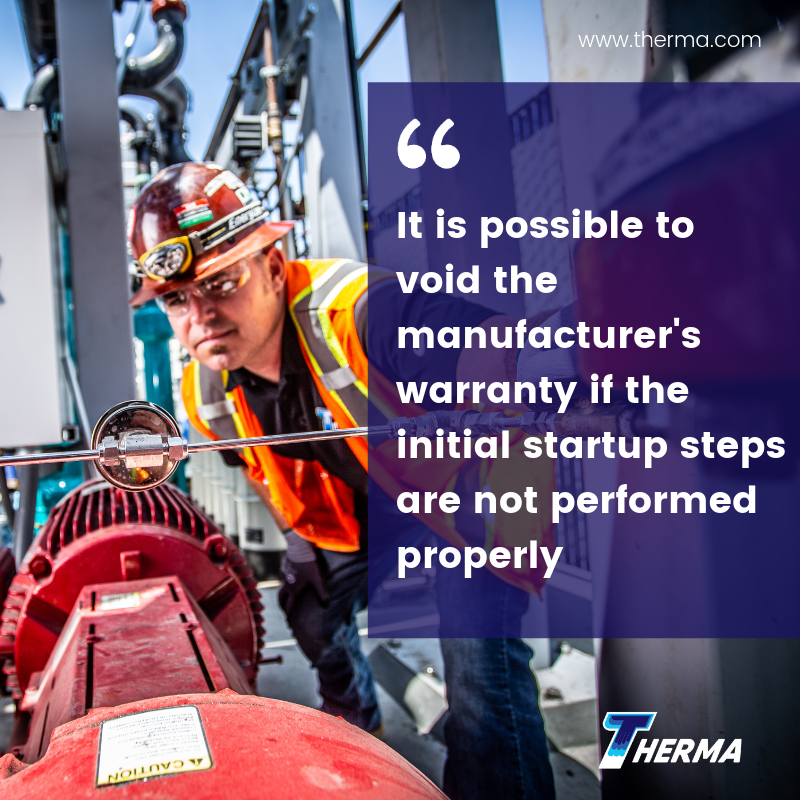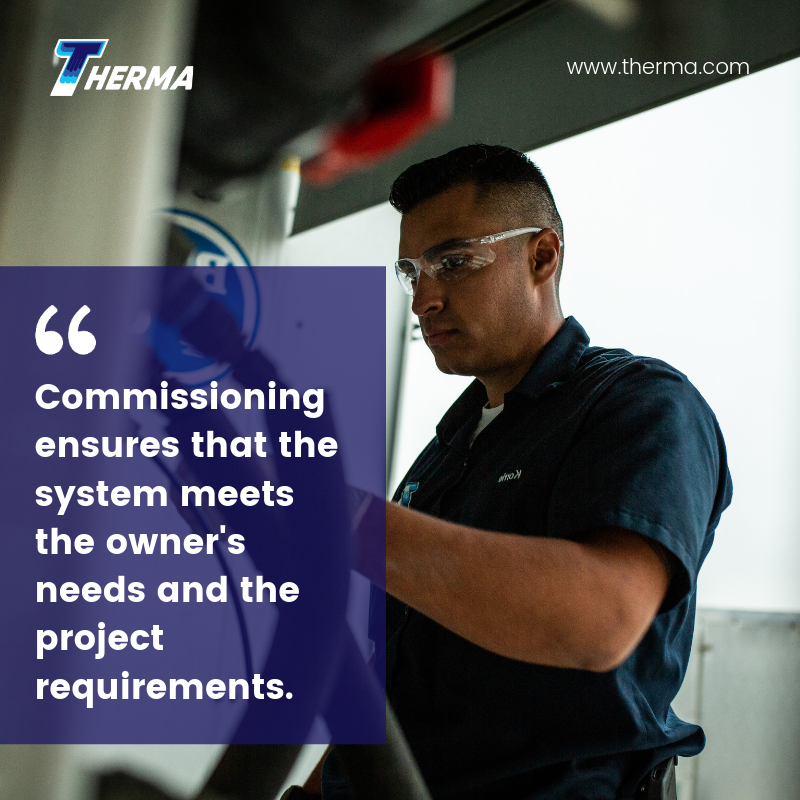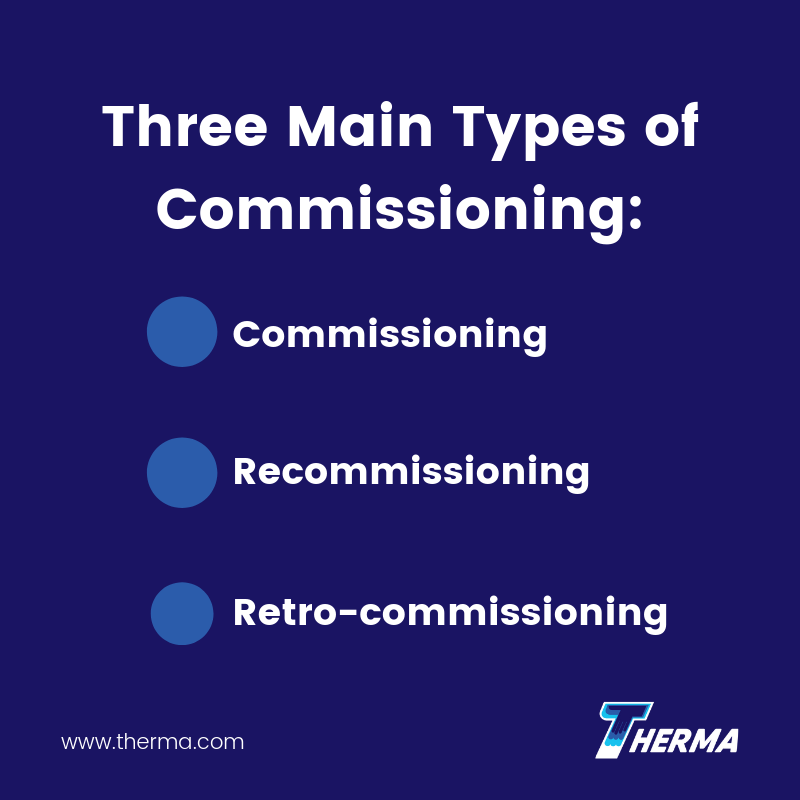by Donna Rider
Commissioning a commercial HVAC system, where do we begin? Commissioning is an ordered process meant to verify that the installation of a commercial HVAC system meets the designer’s intent and specifications. HVAC commissioning has become common with the increased popularity of the LEED rating system.
What Is Commissioning
Commissioning a commercial HVAC system begins with a visual inspection of all components of the equipment and materials to verify that everything has been installed and in the proper location, per design specifications. The next step is to turn on all equipment to verify that the system starts up according to the manufacturer’s specifications. Last is testing the equipment by using scenarios designed to make sure the system will operate as expected, reacting appropriately to changing conditions in the building’s environment. Testing can be time-consuming but is critical for efficient operation and guaranteeing customer satisfaction.
Three Main Types of Commissioning
–Commissioning. Testing a brand-new HVAC installation within a new or existing building to verify that it meets the designer’s and/or owner’s specifications.
–Recommissioning. Testing an HVAC system that was commissioned in the past to verify that it is still performing efficiently. It may include making repairs or any needed upgrades in order to meet ASHRAE, PECI and ACG codes and standards as well as the owner’s needs.
–Retro-commissioning. Testing the HVAC system of an old building that was repaired and upgraded rather than replaced, to verify that it meets the designer’s and/or owner’s requirements.
The Process of Commissioning
Verify Proper Installation
Verifying proper installation begins with an inspection to make sure that the correct equipment and materials have been installed and in the proper location, determining whether the installation meets construction specifications and requirements and creating documentation of all equipment installed.
Initial Start-Up of System

When starting the equipment for the first time, it is very important to follow the startup checklist detailed in the manufacturer’s documentation for each piece of equipment in the system. It is possible to void the manufacturer’s warranty if the initial startup steps are not performed properly. The process of startup, shutdown and the sequence of operation must be carefully documented. Notes are made of any instances of improper operation during this process and reported to the appropriate contractor.
After the startup, shutdown and operation sequence have been verified to work properly and are fully documented, then testing, adjusting and balancing can begin.
Testing, Adjusting and Balancing
The airflow requirements for each air device are tested per the mechanical plan sheet. If no mechanical plan sheet is available, such as for a retro-commissioned HVAC system, balancing the unit per industry standard will be needed.
The initial conditions of the HVAC system are thoroughly documented. This includes testing motors, voltage and amperage, taking flow measurements, adjusting fan motor speed, etc.
Once the outside air and exhaust fans have been balanced, the building pressure is measured. This is a very important factor for the comfort of personnel and the public.
One of the last steps involves simulations of various environmental conditions in the building to verify that the equipment will react appropriately, making sure that when the same conditions occur the system adjusts properly and consistently. If results are not consistent, troubleshooting must be done to determine the reason and fix it.
A commissioning professional must be able to design a commercial HVAC system with all the bells and whistles necessary to meet the requirements of the design specifications, know the products available to design the proper system and test the system prior to going active. They must know all of the new ASHRAE control strategies, PECI and ACG codes and standards. They also need to be aware of other relevant requirements, such as U.S. Green Building Council LEED requirements, as well as state, national and international construction codes.
It is important that all designers, contractors and manufacturers work together to make sure that the system performs exactly as it should, from the basic duct joint through the programming and design of the components.
The Benefits of Commissioning a Commercial HVAC System

In a commissioned HVAC system, the equipment will have been shown to meet all of the new standards, green building, state and national codes for maximum efficiency. Commissioning ensures that the system meets the owner’s needs and the project requirements.
Commissioning a building is very important for ensuring owner satisfaction and energy efficiency, but it is an often-neglected part. When a system has not been commissioned, there is no proof that it will work satisfactorily; and once the work is deemed complete, the owner is responsible for anything that was not actually completed properly.
Biography:
Donna Rider is a Technical Writer with more than 18 years of experience researching, developing, managing and producing on-line documentation and training videos. Ms. Rider gained her expertise in technical writing during her highly successful career in several leadership roles, writing technical documents to assist Help Desk Technicians troubleshoot calls from customers at Gateway and Wells Enterprises.
References:
- https://www.fws.gov/midwest/documents/LEED.pdf
- https://www.interiorsandsources.com/article-details/articleid/6501/title/what-architects-need-to-know-about-hvac-commissioning-retrocommissioning-and-recommissioning
- https://www.ashrae.org
- https://www.peci.org
- https://www.commissioning.org
- http://www.energy.wsu.edu/Documents/BuildingCommissioning.pdf
- https://seedengr.com/documents/hvaccommission.pdf
- http://www.tesengineering.com/what-is-hvac-commissioning/








